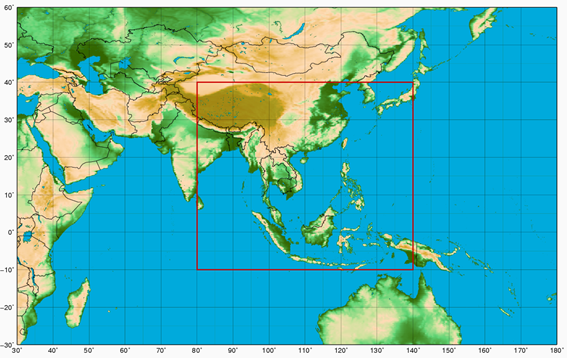SWFP-Southeast Asia
| Beneficiary Countries: | 5 countries in Southeast Asia: Cambodia, Lao People's Democratic Republic (Lao PDR), Philippines, Thailand and Viet Nam |
| Regional SWF Centre: |
Other relevant Centres:
|
| Global Centres/WMCs: |
|
| Main Focus: | Heavy rain, strong winds and damaging waves |
| Inception year: | 2010 |
| Present Status: | Phase-IV (sustain operations and continue further development) |
| Download: | Regional Subproject Implementation Plan (RSIP, ver.6) as reviewed and updated by RSMT in 2017) |
| Development partners/ Donors: |
SWFP implementation in Southeast Asia The SWFP-Southeast Asia was started as a 'demonstration project' (i.e. as SWFDP-Southeast Asia) with a technical planning workshop in Ha Noi, Viet Nam (2-5 February, 2010) to explore sub-region's needs and possible benefits for Cambodia, People’s Democratic Republic of Lao, Thailand, and Viet Nam. The workshop recommended that the project could focus on various hazards especially heavy precipitation, strong winds and high waves due to various meteorological events in the region, while also developing the capacity of the National Hydro-Meteorological Centre of Ha Noi, Viet Nam as a Regional Centre, with the assistance of the Hong Kong Observatory. NWP and satellite products could be provided by the global centres e.g. CMA, JMA and KMA. A meeting to develop a strategy for preparing a draft regional subproject implementation plan (RSIP) for Southeast Asia was also organized in Tokyo, Japan on 17-18 September, 2010. The first two-week SWFDP-Southeast Asia Training Workshop on severe weather forecasting (GDPFS) and warning services (PWS) was conducted in Hong Kong, China during 4-15 July, 2011 and the first meeting of Regional Subproject Management Team (RSMT) was held at RFSC Ha Noi, Viet Nam on 10-13 October, 2011 to discuss and review the RSIP for SWFDP-Southeast Asia. The subproject website (RFSC Ha Noi web portal) was also developed in 2011 to make available NWP including EPS products, and satellite based information for the NMHSs. The Philippines also joined the subproject in May 2012. In later years, several SWFP training workshops were organized to develop capacity of the NMHSs on NWP products' interpretation and use in severe weather forecasting and delivery of warning services. | During recent years, SWFP workshops have also focused on impact-based forecast and warning services (IBFWS). The subproject activities from 2017 onward are mainly funded through Environment and Climate Change Canada (ECCC) project entitled “Building Resilience to High-Impact Hydrometeorological Events through Strengthening Multi-Hazard Early Warning Systems (MHEWS) in Small Island Developing States (SIDS) and Southeast Asia (SEA)” Eighteenth World Meteorological Congress (Cg-18, June 2019) through its Resolution 15 (Cg-18) decided among others to remove the 'demonstration' designation of the SWFDP and renamed it as Severe Weather Forecasting programme (SWFP). Subsequently, the SWFDP-Southeast Asia also became SWFP-Southeast Asia. 
|
| Year | SWFP-Southeast Asia: Activities & Key Milestones since 2010 |
| 2025 | |
| 2023 | |
| 2022 |
|
| 2021 | |
| 2020 |
|
| 2019 |
|
| 2018 |
|
| 2017 |
|
| 2016 |
|
| 2015 |
|
| 2014 |
|
| 2013 |
|
| 2012 |
|
| 2011 |
|
| 2010 |
|
